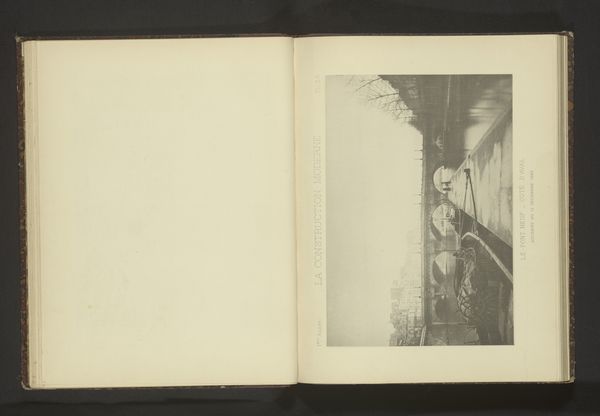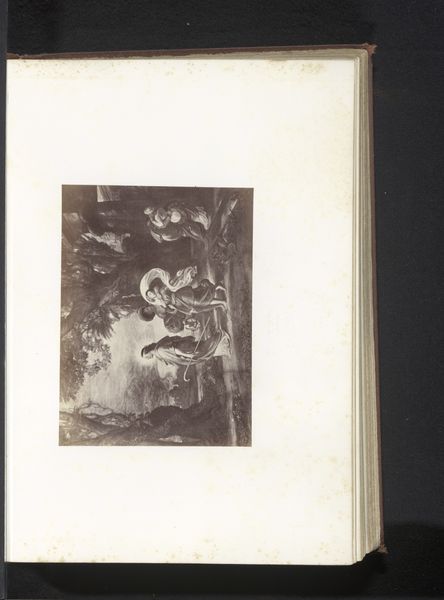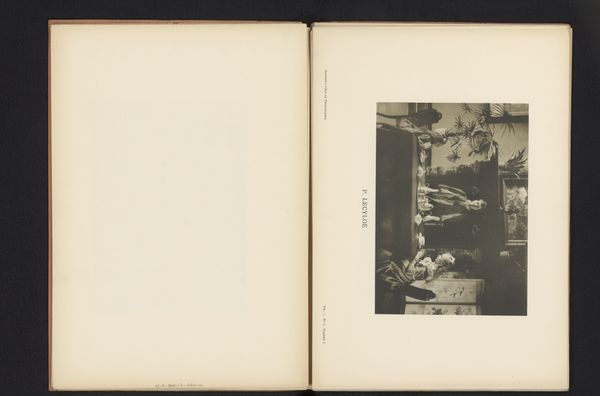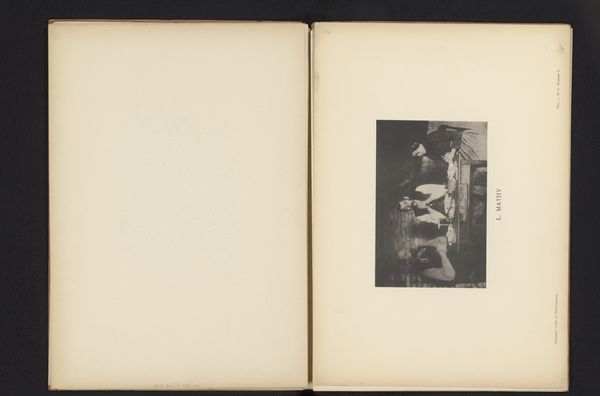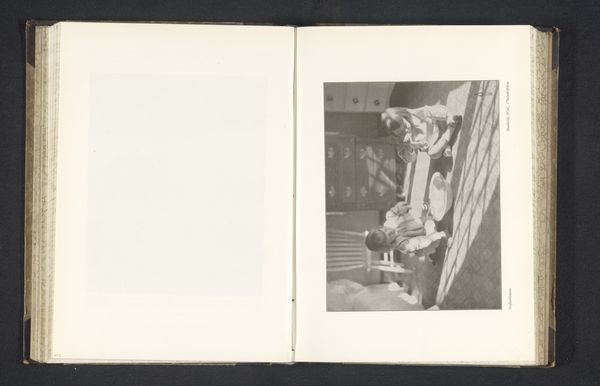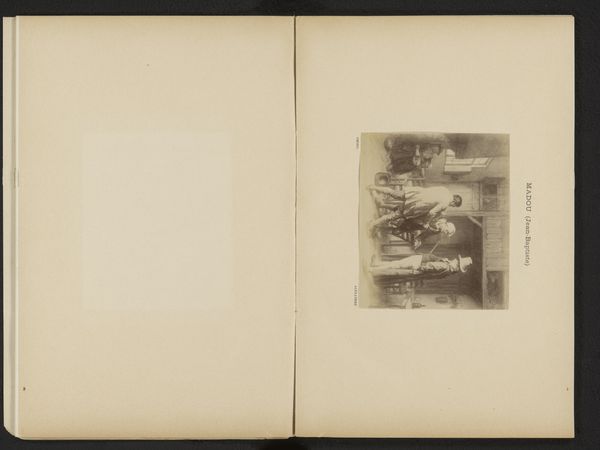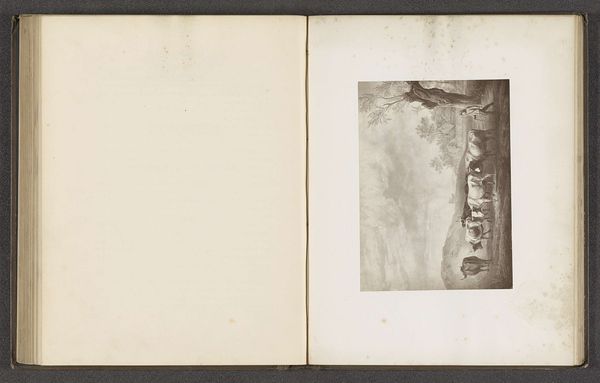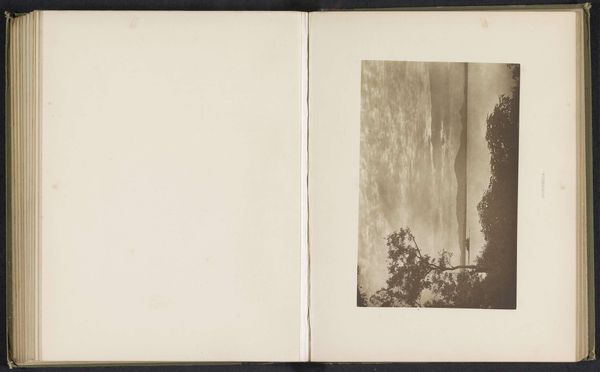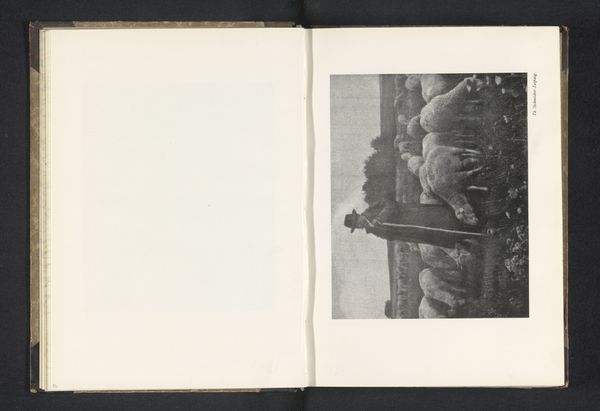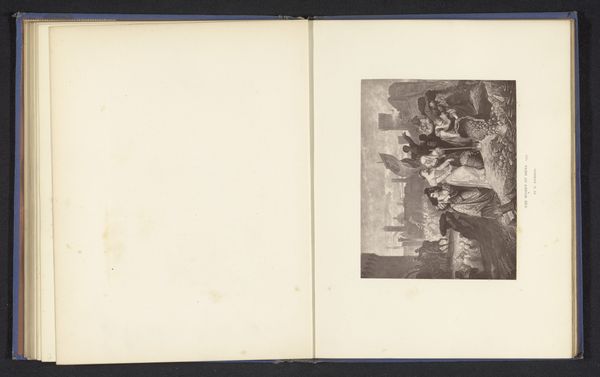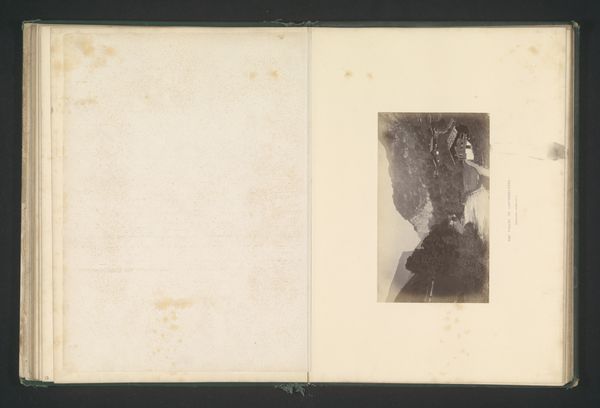
Fotoreproductie van een prent naar een schilderij, voorstellende een kudde met een herder in een weide bij schemering before 1869
0:00
0:00
anonymous
Rijksmuseum
Dimensions: height 120 mm, width 162 mm
Copyright: Rijks Museum: Open Domain
Editor: Here we have "Fotoreproductie van een prent naar een schilderij, voorstellende een kudde met een herder in een weide bij schemering," which roughly translates to "Photographic reproduction of a print after a painting, depicting a herd with a shepherd in a meadow at dusk". It was made before 1869 by an anonymous artist. It looks like it was created using etching and engraving. The landscape has an idealized quality, making it appear more constructed than natural. What's your take on this pastoral scene? Curator: It's fascinating to see the convergence of processes here – a photograph *of* a print *of* a painting. I'm interested in how this reproduction flattens the original artistic labor. We see the pastoral imagery, yes, but the layered means of production speak to the work involved in its creation and distribution. The print medium suggests a wider consumption, democratizing access to this "high art" subject. The social and economic factors involved are central to its meaning, aren't they? Editor: That's interesting, I hadn't considered that aspect. It sounds like this work isn’t just a nice picture of sheep in a field; it’s also a record of technological development of printing practices and methods, and therefore it shows art democratization of the nineteenth century! The emphasis on mechanical reproduction provides commentary on accessibility to images, and what materials can tell about social structure, too. Curator: Exactly. And thinking about materials, we're dealing with ink, paper, photographic chemicals. These aren’t precious materials in the traditional sense, but they facilitate the reproduction of luxury, inviting an audience to the experience, at a cost. It bridges high art and popular culture. This blending is furthered by photographic techniques! What does this tell us about who owned this image, or this photographic "reproduction?" Editor: Okay, I see what you mean! By understanding the means of production we can consider how class and society participated in artwork, and vice versa. Curator: Precisely! And how different labor shapes its materiality. That understanding makes the scene richer than simply some sheep and a shepherd.
Comments
No comments
Be the first to comment and join the conversation on the ultimate creative platform.
